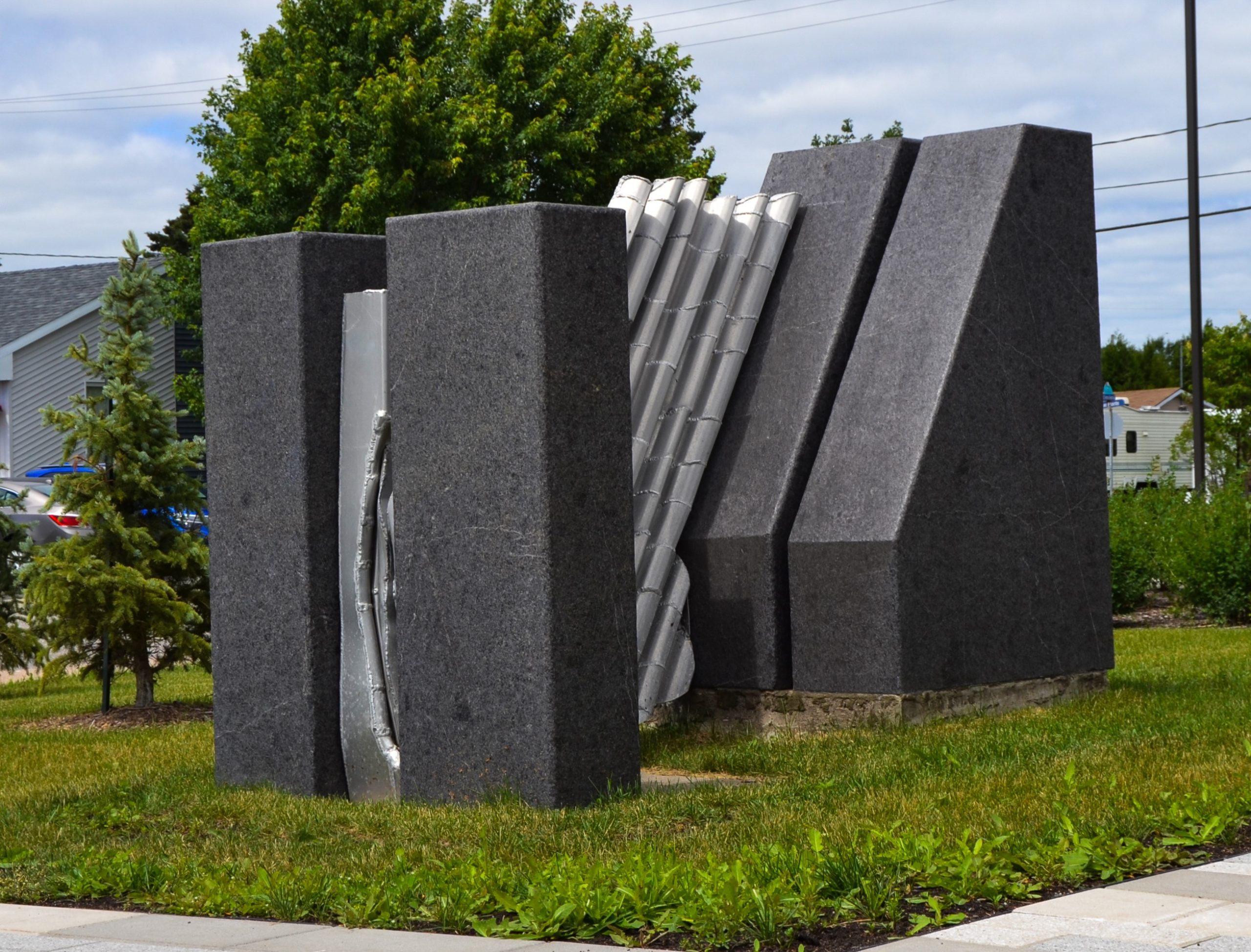Description
This artwork by Ronald Thibert was created for the Musée Louis-Hémon in 1986 as part of the Policy for the Integration of Arts into Architecture and the Environment. The artist presents a personal interpretation of Louis Hémon's novel Maria Chapdelaine, materializing the moral pressures and constraints imposed on women in the early 20th century.
- The black granite blocks evoke the dark, hostile forest surrounding the house and lands of the Chapdelaine family. They symbolize the restrictions and daily oppression faced by female characters.
- Encased by these granite blocks, the folded aluminum piece represents the furrows of plowed earth in the few fields cleared by the Chapdelaine family.
- Finally, compressed between the granite blocks symbolizing oppression, the central piece simultaneously represents the furrows of overturned soil and a vulva. Additionally, it symbolizes the window curtains through which the female characters gaze, hoping to free themselves from the constraints of their lives.
Behind the central piece, the quote "Quelques champs enserrés par l'énorme bois sombre" ("A few fields enclosed by the enormous dark forest") from Maria Chapdelaine is inscribed.
Femme et Terre is a striking example of how art can influence emotions and perceptions. Due to its initially perceived sexual nature, the piece was controversially renamed “L’hymen à Maria” by the local population following a media debate in 1987.
Artist Biography
Sculptor and art professor Ronald Thibert was born in Saint-Édouard de Napierville on January 18, 1942. He studied at the École des Beaux-Arts de Montréal and obtained a master's degree in fine arts from Concordia University.
Deeply inspired by working with steel and wood, the artist contributed most of his works to prestigious art collections across Canada, including the Musée d'art contemporain de Montréal, the Musée national des beaux-arts du Québec, and the Canada Council for the Arts.
Beyond his prolific sculpting career, he played an active role in fostering artistic talent in Saguenay, helping establish cultural initiatives such as the Université du Québec à Chicoutimi's arts program, the Conseil régional de la culture (Culture Saguenay-Lac-Saint-Jean), and the Espace Virtuel artist center (Centre Bang), among others.
Ronald Thibert passed away on March 31, 2016, in Saguenay. He left a significant mark on the cultural landscape of the region, shaping it through his universal explorations of human vulnerability and the effects of time on material existence.

